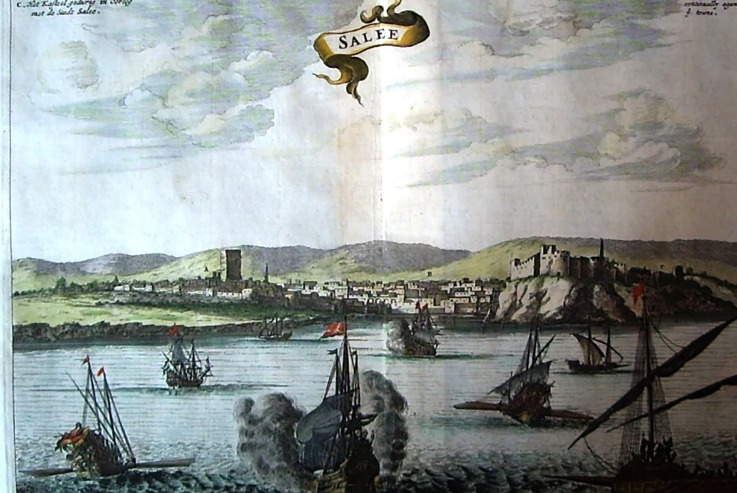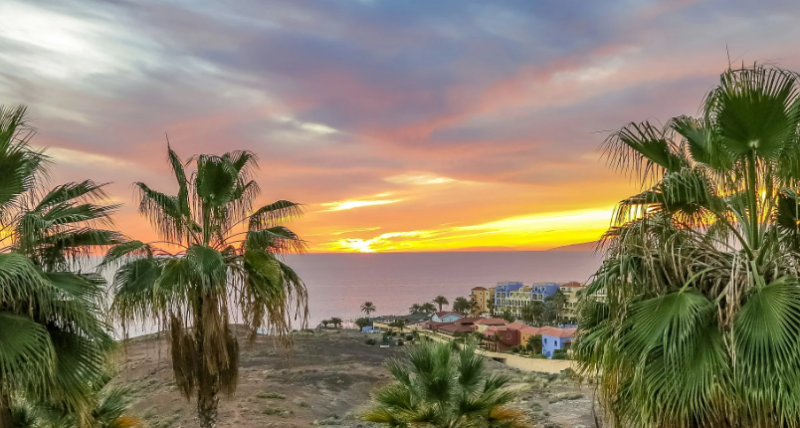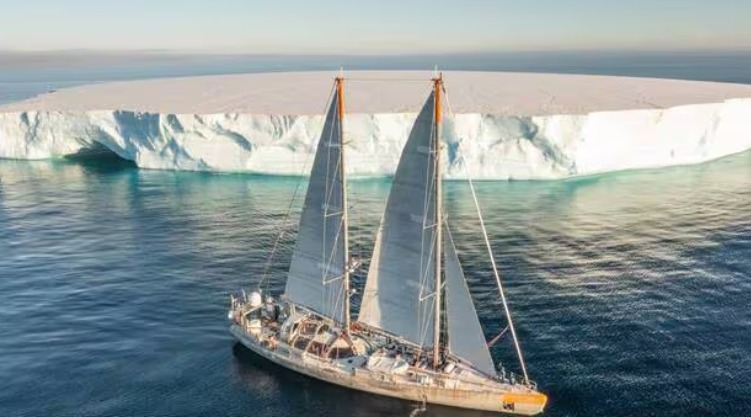The kingdom, a maritime power? Mediterranean side, certainly. But the Atlantic shore has also occupied an important place in the history of the country, with its phases of deployment and other more modest ones. A look back at a centuries-old, even thousand-year-old ocean adventure.
Morocco’s millennia-old relationship with the sea is complex. The primary explanation is found in geography itself: a sea and an ocean. The Mediterranean, certainly more than the Atlantic, will punctuate the history of the country. Almost all invasions will come from the inland sea. They will determine the very identity of the kingdom. The Atlantic coast, however, is not left out. From the Phoenicians to the Romans via the Carthaginians, several civilizations took up residence there very early on, but it was especially in the 15th century, with the momentum of the great discoveries, that the western coast of Morocco definitively participated in universal history. It will then oscillate between closing and opening.
A first clarification is necessary, it concerns historical geography. In the Middle Ages, under the Almoravids and then the Almohads, the Atlantic coast of Morocco covered a wider latitude, extending from the Iberian coasts to the Saharan coasts. From the 12th century, with the complete reconquest of Portugal and then Al-Andalus, the Atlantic coast of the Muslim West suddenly narrowed to the Atlantic shore of present-day Morocco.
Basically, the Arabs are not going to exploit or explore this expanse of ocean which worries them. The great Arab sociologist and historian Ibn Khaldoun does not say otherwise: the Atlantic is « a vast and limitless ocean, in which ships do not dare to venture out of sight of the coast, because even if the sailors knew the direction of the winds, they could not know where the winds would take them, because there was no inhabited territory beyond. It is bahr al-zulumat, the Arabic translation of the Latin mare tenebrarum, the dark sea. “The dark sea means, off the southern coasts of Morocco, this piece of Atlantic which is permanently bathed by the mists rising from the cold waters of the Canary Current”, explains the French historian Pierre Chaunu in his work L’Expansion European from the 13th to the 15th century.
Portuguese expansion
And of course, the Portuguese and the Spanish, with their technical advances with the caravel, the portolans and the stern rudder, will throw themselves into exploring distant horizons in all directions. The Atlantic coasts of Morocco will allow them to project themselves even further. Thus, they will gradually see the appearance of trading posts and strongholds, which are all relays allowing Europeans to ensure maritime continuity between the metropolis and distant colonies in East Africa, Asia and America.
“Portuguese expansion in Morocco took place in two main phases: from 1415 to 1486, the actions took place in the north of Morocco, and, from 1486 to 1550, the Portuguese settled along the Atlantic coast, until ‘in Souss. […] In 1514, at the height of the Portuguese period in Morocco, only two Atlantic ports remained for the Moroccans, Salé and Badis. All other important anchorages were under the control of Lisbon. The Portuguese conquest was also made to last since three bishoprics had been created, in Ceuta, Tangier and Safin. The Portuguese establishments were called fronteiras,” explains historian Bernard Lugan in his History of Morocco. We therefore understand clearly that this control of the Lusitanians is stifling Moroccan trade. Cut off from the Atlantic dynamic, the Cherifian Empire will hunker down on land and trans-Saharan trade, and this for a long period.
This presence of the Portuguese on the maritime facades of the Shereef Empire will have notable consequences on dynastic continuity in Morocco. When, in 1517, the Saadians lit the spark of jihad in the Agadir region, it was both to take back the port cities on the Atlantic from the Lusitanians and to confiscate power from the Wattassids, whom they considered complicit. “invaders”. In a little over a third of a century, the Portuguese were driven out of Moroccan ports, and Fez in 1554 fell into the hands of the Saadians. The Wattassids are over, after a little less than a century of reign. Ironically, the last representatives of this royal family will be assassinated by pirates… on the Atlantic coast!
At the end of the 16th century, Portugal only retained three ports: Tangier, Mazagan (El-Jadida) and Ceuta. Not only did the Portuguese lose part of their maritime empire in North Africa, but, in 1578, after the Battle of the Three Kings, in the vicinity of Ksar el-Kébir, it was their sovereign, Sebastian I, that they lost. in Morocco. The Sherifian Empire gained a new aura from it, and Sultan Abu Abbas Ahmed was given the title of Al-Mansour (“the victor”). The task is not finished, however. It must now secure the Atlantic coast. Morocco, not having a proper fleet, turned to the Queen of England, Elizabeth I. “But for the English, the sea had to remain English, at worst European […] Faced with the English refusal, Al-Mansour had to resolve to turn towards the Saharan sands,” says journalist Bernard Nantet. Constrained and forced, for several centuries, the Makhzen would turn its back on the Atlantic Ocean.
Hackers take control
In the absence of a real naval force under the authority of the central state, the shores are thus abandoned to their fate. A universal law if ever there was one, when the authorities fail, other unofficial organizations take over. In this specific case, it is piracy which will control the Atlantic coast. Salé, not far from Rabat, the current capital of the kingdom, located at the mouth of Oued Bouregreg, became its main stronghold. “The Saletins “robbery” the Atlantic Ocean as far as the Thames, but their vessels preferentially roam the Azores-Madeira-Canary Islands triangle, where they surprise the heavy Spanish galleons on their return from America. They resell their catch – goods and captives – at a price much lower than the prices posted in European ports. […] In the eyes of Europeans, Salé is seen as “(La) African Rochelle””, describes the historian Daniel Rivet in his History of Morocco. From Moulay Idris to Mohammed VI.
This will be the case for practically the next two centuries: the virtual absence of a Shereefian navy is made up for by prosperous piracy. Salé, enriched by the loot, will transform into a republic, a state within a state. We had to wait until the end of the 17th century and the manu militari unification of the kingdom led by Moulay Ismaïl, the Moroccan Louis XIV, to bring the pirates into line and make them buccaneers in the pay of the Makhzen. The central state thus indirectly regains control of its shores. The Cherifian Empire, however, is far from opening up to international trade.
Change certainly came with the accession, in 1757, of Sultan Mohammed ben Abdallah. The latter works towards the economic opening of the Alawite kingdom. And it is quite naturally towards the Atlantic that he turns his eyes. To do this, he took a decisive step: the creation in 1765 of a turnkey port city. It will be Mogador, current Essaouira. The Cherifian sovereign will then entrust the French builder Théodore Cornut with the construction of this city « where all Saharan trade should end […] He entrusted largely to Jewish families, whom he brought from Marrakech, the task of developing this cited […] The signing of treaties in 1765 with Great Britain […], in 1767 with France, in 1777 with Holland, and the authorization to export grains responded to the same desire to involve Morocco to world trade,” recalls historian Yvette Katan Bensamoun.
Morocco therefore signs with the maritime powers which, between them, dominate three quarters of the ocean surface. Mogador, the “Moroccan Saint-Malo”, very quickly became a merchant port, the first in the kingdom. For a short time. The successor of Sultan Mohammed ben Abdallah, Moulay Slimane, for spiritual reasons, hermetically closed the country to Christians. And Mogador collapses. It was only in the 19th century, with the opening of Morocco to European penetration, that the Atlantic coast would regain its luster.
Ports, “active centers of European influence”
The increased demand for cereals in Europe, in the midst of a population boom, is generating renewed activity. Not only in Essaouira but in various Atlantic ports: Larache, El-Jadida, Casablanca are not left out. And it’s not just cereals. Merchants from Marseille and Manchester are becoming more and more noticed in their quest for wool or skins, of which Morocco is a major producer. “Between 1830 and 1840, Moulay Abderrahmane reopened the Atlantic ports to maritime trade, which skyrocketed from 4 to 20 million gold francs,” estimates Daniel Rivet. At the end of the 19th century, eight Atlantic ports ensured regular exchanges of passengers and goods with Europe. They became “active centers of European influence”, to use the words of the historian Jean-Louis Miège.
Under pressure from the West, Makhzen is forced to increase its port capacities as well as improve infrastructure. Docks, hangars, coal depots, port fires are scrutinized. The decisive and final boost in the opening of Morocco to the Atlantic will come with the French colonizers. In 1907, entrusting the work to the Schneider group, Marshal Lyautey decided to expand the port of Casablanca, with Kenitra as a secondary port. It was done a little over a decade later. The port of Casablanca will very quickly supplant that of Tangier and take away its first position, acquired at the turn of the 20th century. It remains, in 2024, the largest Moroccan port on the Atlantic but the second in the kingdom after that of Tangier Med. And the latest initiative announced by King Mohammed VI clearly shows how, from now on, the Atlantic is an integral part of Moroccan identity.




